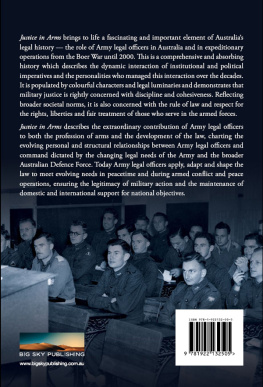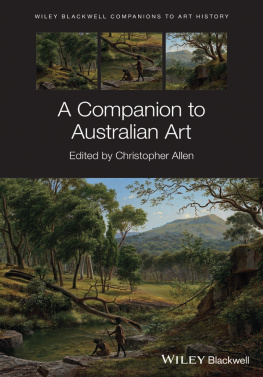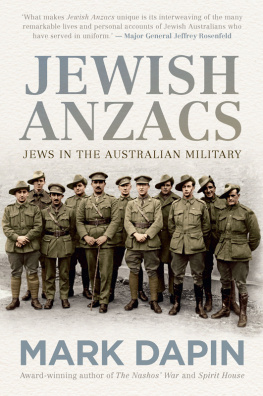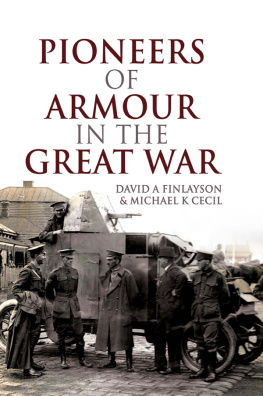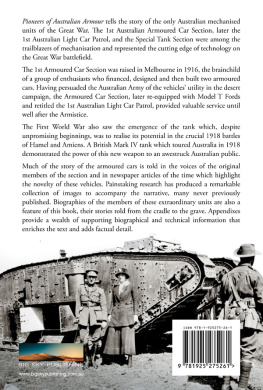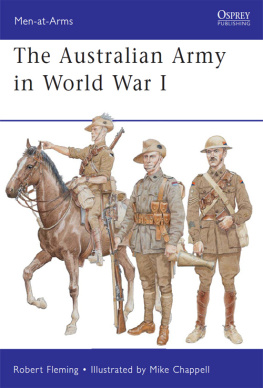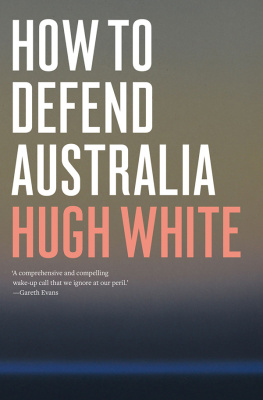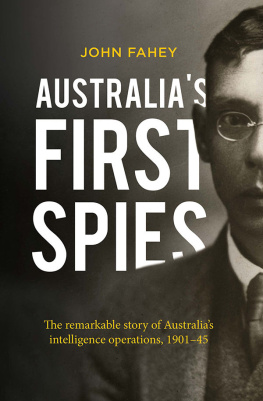ACKNOWLEDGEMENTS
When I was commissioned into the Royal Australian Air Force (RAAF) nearly thirty years ago I had little understanding that my service would be underwritten by a life-long passion for learning and teaching. However, I am pleased that it is so and I make no secret of my commitment to the RAAF, its values and to the people with whom I serve. I am indebted to the tens of dozens of officers and airmen who contributed to this work; equally to the hundreds of others who served on Operation OKRA that I did not have opportunity to chat with. Of course, in a small volume of this size and at the unclassified level, one can only hope to draw together the narrative of what has occurred in a period of three years operations firstly, in the air war over Palestine a century ago, and secondly, in the RAAFs most recent conflict in Iraq and Syria.
In November 2016, the newly appointed Director General History and Heritage Air Force, Air Commodore John Meier, met with me at the Air Power Development Centre (APDC) in Canberra. There, he outlined his concept for a series of publications for the RAAF and asked if I would undertake the first volume. His notion was sublime: well-researched books on RAAF history that are readable, well-illustrated, educative and enduring. We shook hands and agreed that I would finish the volume in the course of my wider duties as a professional military aviator, educator and scholar. What a treat! What a journey! Of course, one always underestimates the amount of work involved in such endeavours. Here I am three years later having culled my work to a manageable 70 000 words. I also found that I had to shape the story of these men and women in a very different way to my recently completed PhD. I hope that I have done so to the satisfaction of you, the reader. Naturally, I also hope many people have the opportunity to see this work, but for those with whom I serve in the RAAF I want this volume to tell a factual story that will resonate.
There is always a problem in writing history with a set number of words and when we are still in the aftermath of the events described in Part II of this work. Such matters might be problematic. I served in Iraq during the 2007 surge, so I immediately acknowledge my views on events in this part of the world have been influenced. I am not separate from them. Notwithstanding this, as a writer and teacher, I have remained as dispassionate as I can be in recording these events. In any event, all of this is okay. This volume is but a start. Future researchers will look on this period in the history of the RAAF in greater detail when time offers context. They will discover nuances that I have missed. They will uncover individual stories not yet told, because my work cannot possibly name everyone who served. This is the way matters should be. The future Air Force and the people of Australia will pause and reflect on these events and their understanding will surpass this survey. And it should be this way, too. Organisations like the RAAF are constantly evolving, and individuals should grasp every opportunity to stop, review and reflect on their core business when the time permits.
I am deeply indebted to Air Commodore John Meier and for his enthusiasm to publish this work. John Meiers confidence in my ability to paint this picture for the RAAF is an inspiration and privilege. As this goes, the book was thoroughly reviewed across the service, and I thank the History and Heritage BranchAir Force for assisting in producing the final product. I am equally fortunate in the opportunity to have had access to AWM and RAAF records to put together the imagery contained throughout the work. When you look through this volume, please acknowledge the quality of the images, maps and level of detail surrounding them. While I am on this point, I must also make note of the splendid colour plates throughout the volume. Juanita Franzis illustrationscommissioned by the RAAF for these works and depicting AFC and RAAF aircraft as they wereis simply first rate! I am grateful to my colleagues Steven Campbell-Wright, and Drs Tom Richardson and Rich Adams for also running a professional eye over my prose before it went to the publishers. All three are thorough gentlemen, and skilled masters in the business of putting the story down on paper. Thank you, too, to my mentors Group Captain Philip Edwards and Professor Sanu Kainikara; both gave significant encouragement for the spirit in which this work was undertaken.
Of course, in this inaugural work I am indebted to the record of the exploits of the earliest generation of officers and airmen of the AFC. These airmen established a pattern for Australian military aviation that remains as true as it was a century ago. They informed Part I of the work. As for Part II, I must highlight what a privilege it was to engage with a number of personnel who served on Operation OKRA between 2014 and 2017some of them several times. In particular, I am most grateful for the recollections and insights of Stephen Chappell, Pete Mitchell, Mark Barry, Jeremy Feldhahn, Steve Roberton, Melody Sadler-Barker, Lee-Anne Stanway, Sean Gardner, David Doc Martin, Bryce Robinson, Leigh Collins and Andrew Earl. Some of these officers I have worked for or with in the past. Most of them are still serving, and I am deeply appreciative for the support that each showed for getting the story down. I am fortunate to have had access to the numerous interviews conducted with personnel involved in Operation OKRA. Without these recordings, I would not have been able to gain an appreciation for what the operational environment was like. There were dozens of interviews I did not get to, and hundreds of personnel I did not chat with about Operation OKRA. There simply wasnt time! I must acknowledge these officers and airmen, too.
Finally, though, I must acknowledge with love and gratitude the sacrifice made by my wonderful wife, Liz, and our youngsters in facilitating this narrative. In three years, there were countless (and I have lost count) Saturday and Sunday afternoons spent in front of a computer screen. These days were rightly dedicated to bike riding to the park, or games, or other outings. This work is equally for them and all the other families, separated by the exigencies of military service.
Wing Commander Lewis Frederickson PhD
Chief of Air Force Fellow
August 2020
ACRONYMS
| AAR | Air-to-Air Refuelling |
| ABM | Air Battle Management |
| ACC | Air Component Commander |
| ACM | Air Chief Marshal |
| ACO | Air Combat Officer |
| ADAB | Al Dhafra Air Base |
| ADF | Australian Defence Force |
| ADFA | Australian Defence Force Academy |
| AEW&C | Airborne Early Warning and Control |
| AFC | Australian Flying Corps |
| AIF | Australian Imperial Force |
| AIRCDRE | Air Commodore |
| AMAB | Al Minhad Air Base |
| AME | Aero-Medical Evacuation |
| ANZUS | Australia, New Zealand & the United States |
| ARDU | Aircraft Research and Development Unit |
| ATG | Air Task Group |
| ATO | Air Task Order |
| BDE | Brigade |
| BIAP | Baghdad International Airport |
| BPC | Build Partner Capacity |
| CAOC | Combined Air Operations Centre |
| CAS | Close Air Support |
| CAP | Combat Air Patrol |
| CATG | Commander Air Task Group |
| CC | Combat Controller |
| CDF | Chief of the Defence Force |
| CENTCOM | Central Command |
Next page

